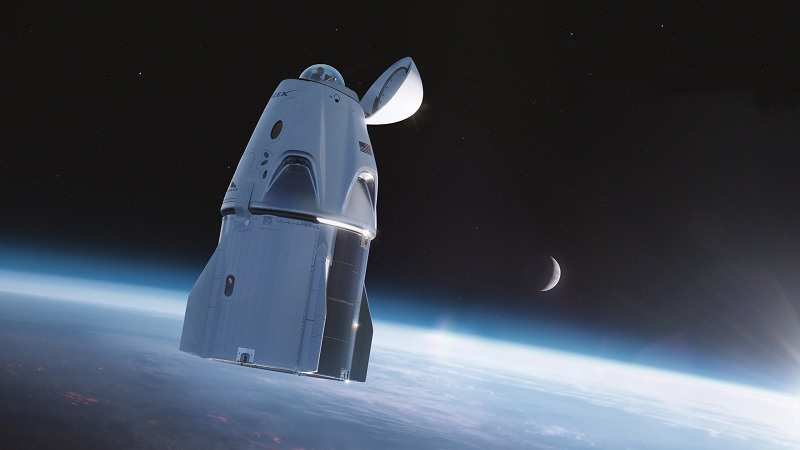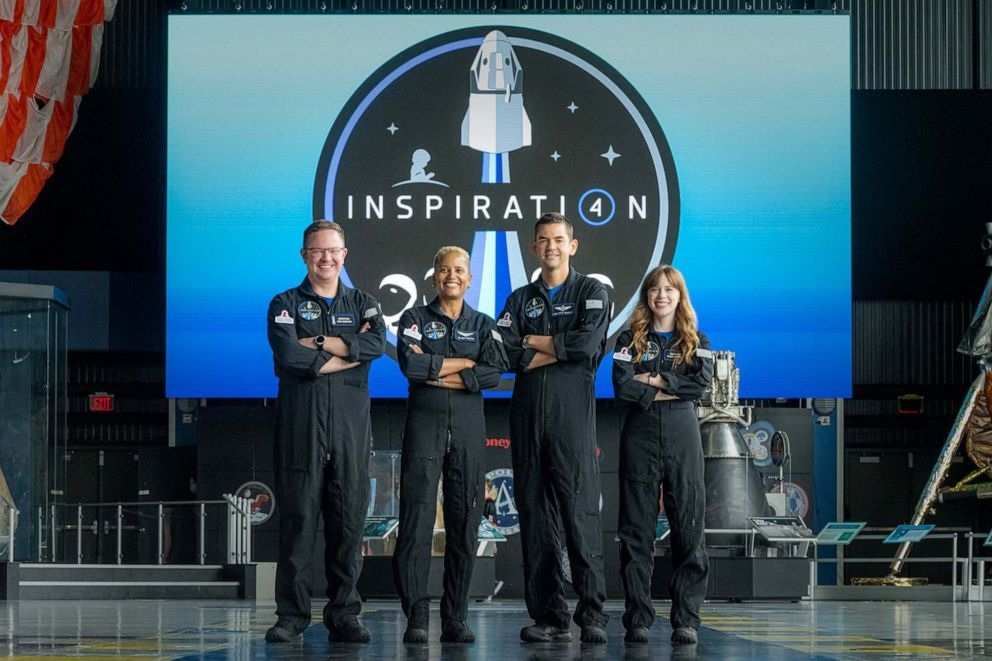SpaceX Set to Launch Inspiration4, Its Private Civilian Spacecraft

Wednesday will see the launch of the first all-civilian journey into Earth’s orbit. After saying farewell to their families, the Inspiration4 crew was taken in Teslas to Kennedy Space Center’s historic pad 39A on Wednesday afternoon, ahead of SpaceX’s Falcon 9 rocket’s five-hour launch window starting at 8:02 p.m.
Richard Branson and Jeff Bezos couldn’t get into orbit, but SpaceX’s Inspiration4 mission is the third recent billionaire-funded space launch.
Inspiration4 will be able to go to the furthest point from Earth that a civilian has ever been. As a result, they will orbit 360 miles above the Earth, which is even further than the International Space Station, which revolves at 240 miles above the Earth.
As of now, the world’s first all-civilian human spaceflight to orbit is scheduled for Wednesday, September 15 at 8:02 pm EDT (Thursday, September 16 at 00:02 UTC) onboard SpaceX’s Falcon 9 rocket and Dragon spacecraft from NASA’s Kennedy Space Center in Florida. Dragon and the Inspiration4 crew will splash down around three days after liftoff at one of four probable landing locations off the Florida coast.
About four hours before liftoff, SpaceX’s livestream for the Inspiration4 mission will go live. Isaacman, the creator and CEO of Shift4 Payments and a well-versed aviator and explorer, is in command of Inspiration4. Doctor Hayley Arceneaux works at the St. Jude Children’s Research Hospital® in Memphis, Tenn.; Mission Specialist Chris Sembroski is an Air Force veteran and a data engineer for aerospace; and Mission Pilot Dr. Sian Proctor is a geoscientist, businesswoman and certified pilot.
In charge of the expedition is Jared Isaacman, a 38-year-old millionaire pilot. For an estimated $220 million, he acquired all four seats on the trip using a payment processing firm called Shift4 Payments, which he created.
It is Isaacman’s hope that the proceeds from this launch will go to St. Jude Children’s Research Hospital in Memphis, Tennessee. 100 million dollars have already been given.
St. Jude ambassador Hayley Arceneaux, 29, had a seat allocated for her. Because Arceneaux has battled bone cancer, he is the youngest American astronaut and the first child cancer survivor.
Dr. Sian Proctor, 51, will be the third passenger, and she has been dreaming of travelling to space since she was a little girl. The news of her selection as a member of the Inspiration4 mission broke her heart and she burst into tears as a result. When she goes into space, she will be the fourth African-American woman in history to do so.
Chris Sembroski, a 41-year-old Iraq War veteran and Lockheed Martin engineer, is the final crew member. He earned the final seat in a lottery that needed a St. Jude contribution to enter.

The four will orbit the Earth for three days without a predetermined destination, and will then return to Earth. During their time in space, they plan to perform science experiments and sell off objects to raise money for the charity St. Jude.
As with any venture into space, there’s always a chance of not making it back. However, despite the fact that they have been educated by SpaceX, these passengers are not qualified to be astronauts. The SpaceX Crew Dragon will also be tested for the first time at this altitude for the first time in its history.
Their gasoline, food, and water supply can’t last more than three days. When it comes to the return of the spacecraft, this one won’t have the same flexibility that other missions did because of severe weather on Earth due to the presence of people on board.
As they prepare to splashdown in the Atlantic Ocean off the coast of Florida late Saturday or early Sunday, they will have orbited the Earth for three days.
How much would it cost to go to space?
It depends, says McAlister. For an excursion on Virgin Galactic’s SpaceShipTwo and Blue Origin’s New Shepard, situates regularly cost $250,000 to $500,000..
“Those are suborbital transportation frameworks. They are around a brief ride, and they scarcely contact the edge of room and afterward return. They don’t go into space,” McAlister says. The Inspiration4 mission is unique.
The shuttle of regular citizens will go into space and circle the Earth for three days, like orbital spaceflight needed for space travelers to get to the International Space Station.
Paying for everything is Jared Isaacman, a 38-year-old tycoon secondary school dropout, who is advancing the trip as monstrous gathering pledges exertion for St. Jude Children’s Research Hospital.
Issacman, a pilot who is able to fly business and military planes, arrived at an arrangement with SpaceX in late 2020 for the mission.
Nor is saying the amount he is paying SpaceX for the dispatch, however Isaacman has said it was definitely not exactly the $200 million he desires to raise for St. Jude.
For NASA space travelers, McAlister says, orbital outings can have a $58 million sticker price, in light of midpoints determined from business contracts with SpaceX and Boeing.
While $58 million might appear to be a ton, it’s really an extraordinary can anticipate NASA.
In the wake of resigning its space transport, NASA needed to pay Russia around $80 million for each seat on the Russian Soyuz space apparatus.
“We needed to end that dependence and ensure that we had a U.S. ability to move our space travelers,” says McAlister. “The other objective that was expressly essential for the program was to empower a business ability to fly non-NASA clients into space.”
This drive to accomplice public and private assets for American space investigation has been a long time really taking shape.
NASA has been working with SpaceX and Boeing on their frameworks throughout the previous 10 years, moving their insight from over 60 years of human spaceflight and advancement in low Earth circle.
“During that 60 years, somewhere around 600 individuals have fled, and by far most of them have been government space explorers. I think in the following 60 years, that number will go up significantly, and by far most of them will be private residents,” McAlister says.
The objective for NASA is to ultimately resign the International Space Station and permit organizations to fabricate their own space stations with the most recent mechanical plans that require less support.
Later on, space travelers could simply lease seats on space transports and stay at rooms in space stations, like how business voyagers purchase boarding passes from carriers and rest in lodgings.
“On the off chance that you recall when carrier travel initially appeared, it was over the top expensive, and it was uniquely for the extremely rich that can bear the cost of it. And afterward business visionaries entered the market. Powers of contest brought costs down to where today, the vast majority, not every person, but rather a great many people can manage the cost of a departure from New York to California,” says McAlister. “I’m trusting that exactly the same thing occurs with human space transportation.”
